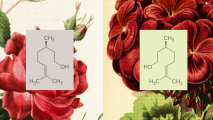Want to consistently beat the odds against death, no matter where you live or how old you are? Be born female.
Cisgender women have a better chance of surviving 13 of the top 15 causes of death at every age, according to a paper published in the journal Cell Metabolism in 2016. The female survival advantage exists not just in the elderly but across the entire human lifespan — even baby girls born prematurely are more likely to survive than male preemies. This pattern is so strong and so consistent throughout human history and across the world that longevity researchers have called it one of the most robust features of human biology.
It’s also deeply puzzling. “When times are good, when times are bad, it doesn’t seem to matter,” said Steven N. Austad, who researches aging at the University of Alabama at Birmingham and co-authored the Cell Metabolism paper. “Women always survive better than men, and we really don’t know why.”
Because the female survival advantage exists even among babies and young children, where very few hormonal differences exist between the sexes, hormones are unlikely to be responsible for the lifespan gap, so researchers have had to look elsewhere for possible explanations.
“All of these theories are validated to some extent.”
Jean-François Lemaître
One is that mitochondria — specialized compartments that generate energy for our cells — contribute to longevity. These cellular subunits contain small amounts of DNA with genes inherited only from mothers, and since only mothers pass them on, it’s possible that genetic mutations that harm only men could go unchecked by natural selection. “Mitochondria in males are at a dead end,” Austad said. “They’re not going to go into the next generation.”
Scientists have found a few male-specific mitochondrial genetic diseases, but this “mother’s curse” hypothesis is likely not a complete explanation for the lifespan differences between the sexes. Human mitochondria only hold 37 genes, compared to the approximately 20,000 in the rest of our genomes, and researchers say that’s too few to explain such a big difference in longevity.
Differences in sex chromosomes are another possible explanation. While females have two X chromosomes, males have one X and one Y, and according to Jean-François Lemaître, an evolutionary biologist at the University of Lyon in France, this could cause problems for men in two ways.
Females randomly switch off one of their X chromosomes in every cell, so if one of their X chromosomes contains a disease-causing mutation, it will only be active in about half of them. The healthy X chromosome will be active in the other half, which could be enough to prevent the disease from developing. If a male’s X chromosome has a mutation, though, it doesn’t have a backup to compensate.
Different social and biological pressures could be contributing to the lifespan gap between the sexes.
Alternatively, the Y chromosome itself could be toxic. It has a large number of genetic features known as transposable elements, which hop around the genome, copying and adding themselves to other parts of our DNA. Too much of this activity could potentially disrupt important genes in the male genome, leading to disease.
Clues from elsewhere in the animal kingdom lend credence to the sex chromosome theory. The female survival advantage exists not just in humans, but in most other mammals as well, at least in the wild, as Lemaître found in a study published in 2020. However, in other animal species in which females have two different sex chromosomes and males have two copies of the same, males tend to live longer — many male birds, for example, live slightly longer with their two Z chromosomes than female birds with their Z and W chromosomes.
Males and females experience different social and biological pressures, too, and those could be contributing to the lifespan gap between the sexes. Males typically evolve to be robust at a young age so that they can reproduce early and often, while females evolve traits that support survival so that they can raise offspring. In many mammal species, males are driven to compete with each other for mates, which can be dangerous, and in humans, men are more likely than women to die of violence and accidents.
“All of these theories are validated to some extent,” said Lemaître. “There are multifactorial effects that could explain sex differences in lifespan.”
“There’s probably going to end up being anti-aging interventions for men and other ones for women.”
Steven N. Austad
Although there’s no FDA-approved lifespan-extending drug available today, several medications have shown promise in lab mice — and even in these early studies, sex appears to be a critical factor in how aging interventions work. In 2023, the journal Frontiers in Aging published a review that examined 72 longevity studies in mice. Of the studies that tested treatments in both sexes, the medications affected the healthy aging or lifespan of males and females differently 73% of the time.
For example, rapamycin, an immunosuppressant, extends the lives of both male and female mice, but females get more of a boost. Meanwhile, metformin, the diabetes medication turned potential longevity drug, showed sex-specific differences, but they were largely dependent on the breed of mouse. In one breed, males would get the boost, and in another breed, females would benefit the most. The compound 17α-estradiol, a synthetic form of estrogen, seems to extend lifespan only in male mice. Austad’s team is currently testing it in laboratory rats to see if the sex difference holds up in a different lab-animal species.
Unfortunately, it’s hard to draw any conclusions on whether these drugs might affect male or female humans differently until we actually test them in people. In 2020, the journal PNAS published a study that found that mammals in confinement don’t have a consistent difference in longevity by sex, but the FDA requires that drugs be tested in controlled environments. Ultimately, the fact that so many interventions still trigger different outcomes in male and female lab animals suggests we may never find a one-med-fits-all-sexes longevity treatment. As Austad said, “There’s probably going to end up being anti-aging interventions for men and other ones for women.”
We’d love to hear from you! If you have a comment about this article or if you have a tip for a future Freethink story, please email us at [email protected].





















